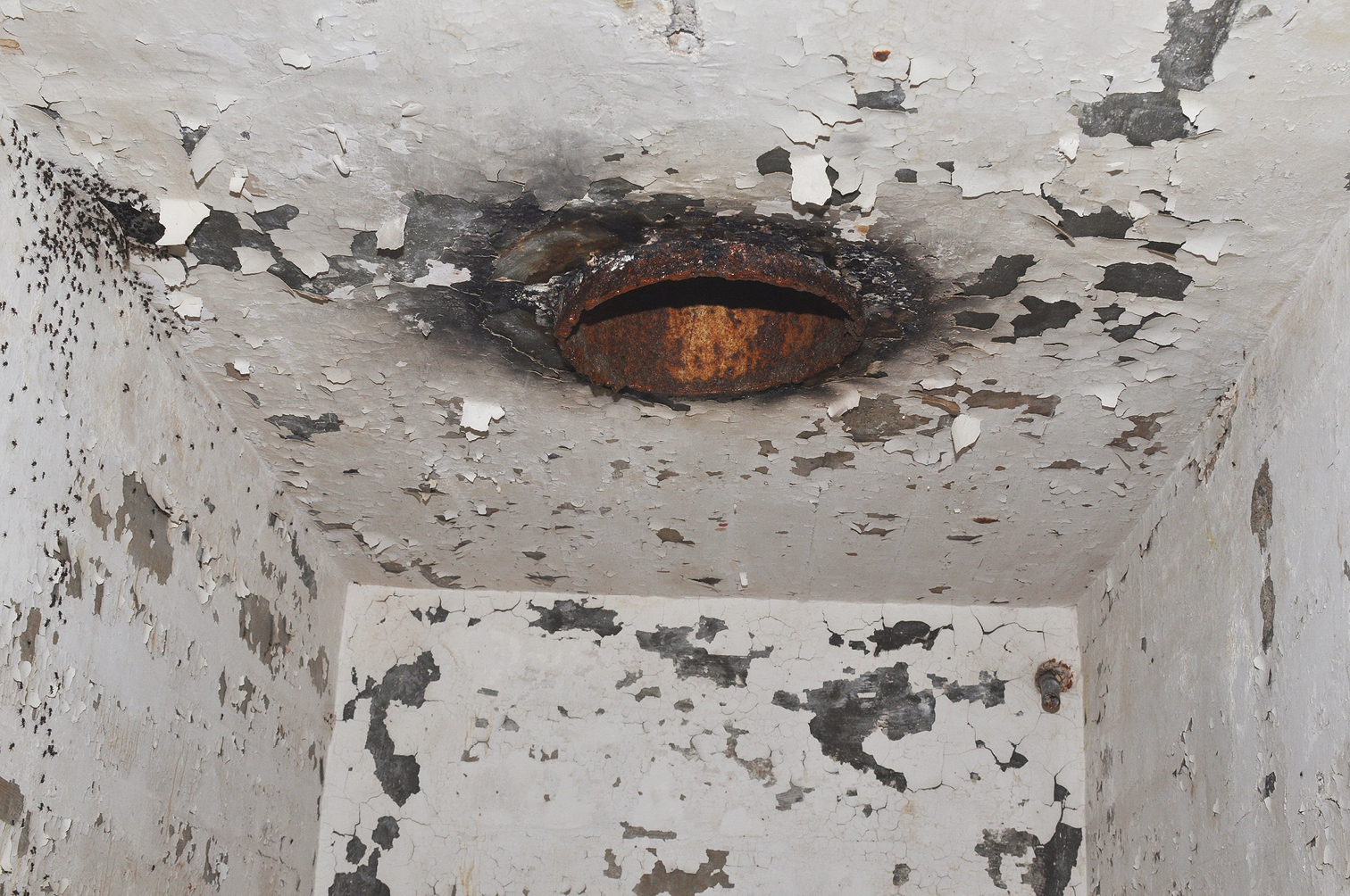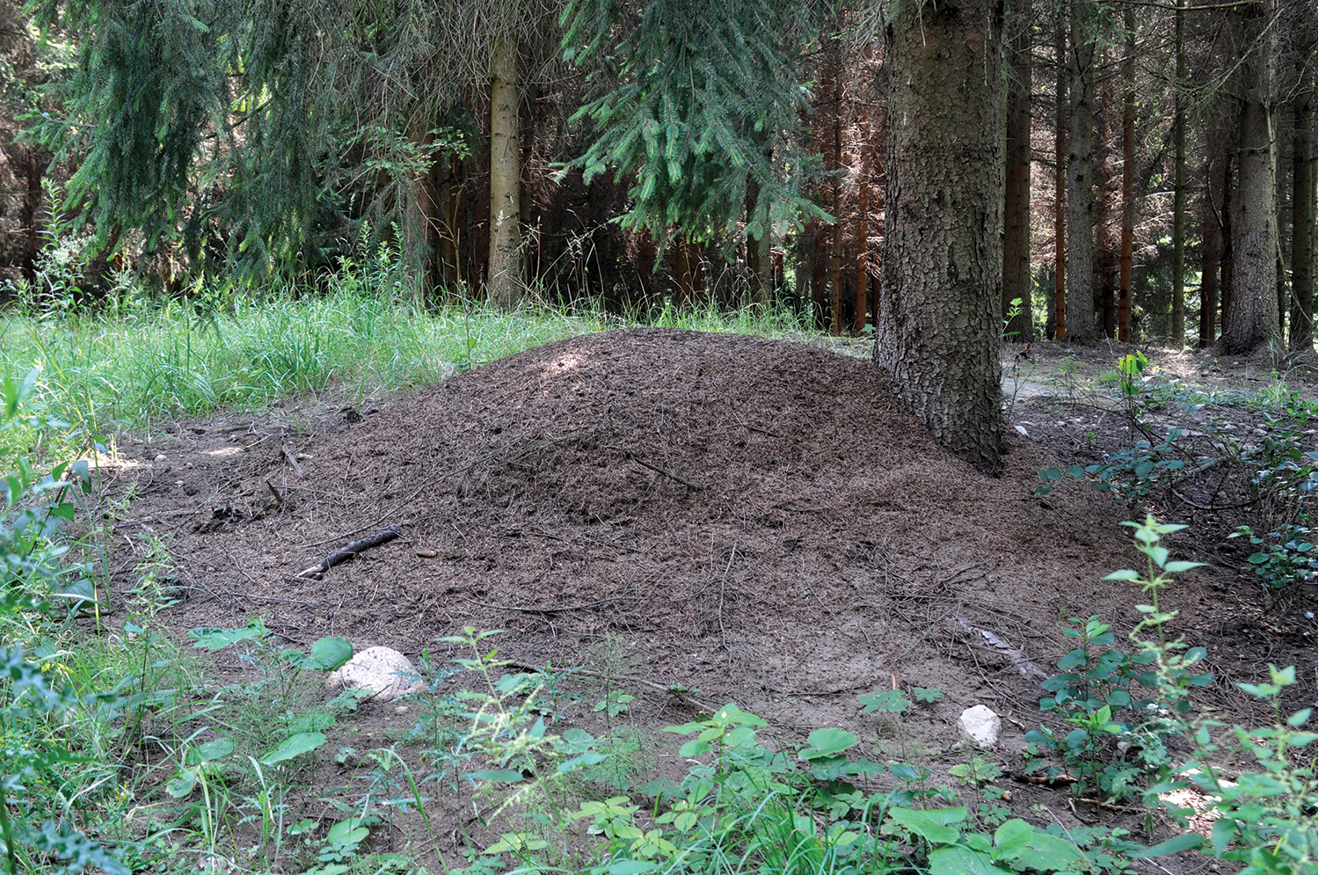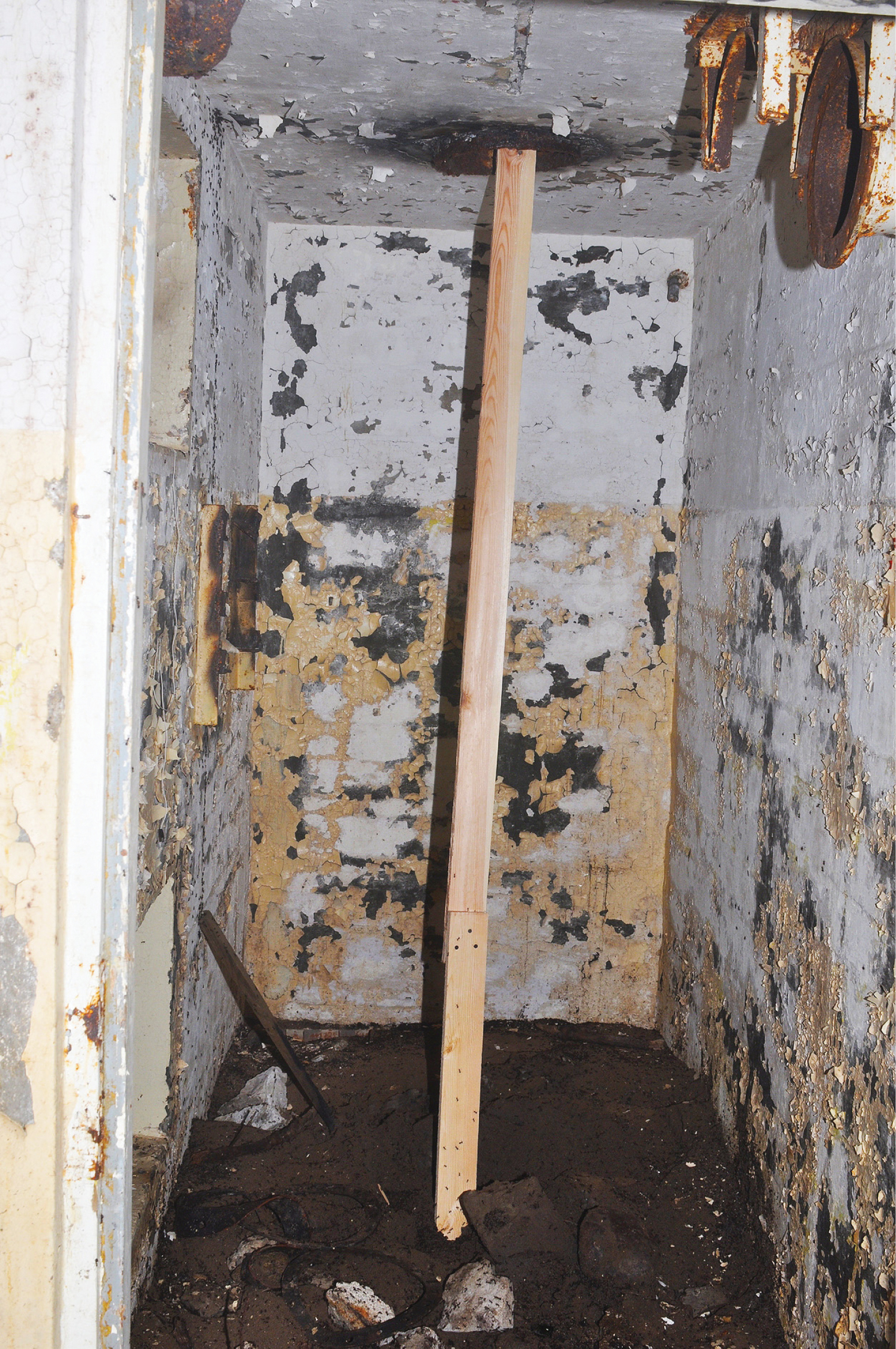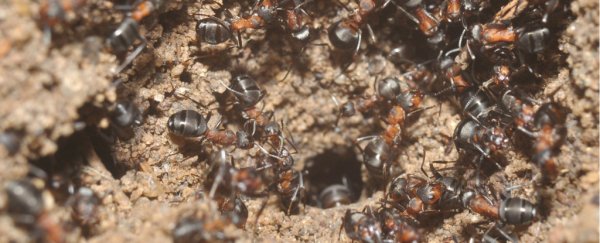Even in a hopeless place, ants will find a way. No food, no light, no escape? No problem.
In the woods of western Poland lies a dismantled Soviet nuclear base, complete with two underground bunkers where nuclear ammunition was once kept. After the military complex was abandoned, these eerie human-made caves became great roosting places for overwintering bats.
In early 2010s, volunteers started visiting the bunkers to monitor the bat population in winter, and made a discovery of a different sort: A large mass of wood ants (Formica polyctena) trapped on the bunker floor, surviving without a queen or any of their usual creature comforts.
 The bunker 'colony' with a 'cemetery' against the far wall. (Wojciech Stephan/Czechowski et al., Journal of Hymenoptera Research, 2016)
The bunker 'colony' with a 'cemetery' against the far wall. (Wojciech Stephan/Czechowski et al., Journal of Hymenoptera Research, 2016)
When it was first found in 2013, this 'colony' of underground ants already included up to a million live workers and several more million dead. They were not reproducing, though. Instead, the population was being replenished through sheer accident.
In the ceiling of the bunker sat a rusted ventilation pipe, connecting the dark cavern to the forest above. There, a giant ant colony had built a mound right above the bunker; as the metal rusted through, some of their ranks started falling into the concrete cavern below.
 The ventilation pipe. (Rutkowski et al., Journal of Hymenoptera Research, 2019)
The ventilation pipe. (Rutkowski et al., Journal of Hymenoptera Research, 2019)
"In total darkness, they have constructed an earthen mound, which they have maintained all-year-round by moulding it and keeping the nest entrances open," researchers wrote in a study in 2016, noting these ants are "a far cry from a fully functional colony".
Investigating the limits of ant living conditions is a subject of keen interest for some entomologists. So, for several years, researchers made repeated trips to the bunker and watched in fascination as this isolated population continued to grow and survive despite a lack of light, heat, or obvious nourishment.
Now, scientists finally know how these trapped insects pulled it off: the mass consumption of their own imprisoned nest mates.
 The colony built above the ventilation pipe. (Czechowski et al., Journal of Hymenoptera Research, 2016)
The colony built above the ventilation pipe. (Czechowski et al., Journal of Hymenoptera Research, 2016)
Cannibalism was obviously suspected; wood ants are, after all, the only major food source available in this tight spot, apart from the occasional dead mouse or bat. Plus, this particular species is known to consume their own fallen dead during territorial "ant wars" when food is often scarce.
To confirm this hunch, a team of researchers collected corpses from several ant 'cemeteries' scattered within the bunker. Closely examining 150 dead worker ants, the team noticed the vast majority of bodies (roughly 93 percent) had gnawed holes and bite marks.
The authors say these are clear signs of mass consumption, with practically no other organism in the bunker capable of making these marks.
"The survival and growth of the bunker 'colony' through the years, without producing own offspring, was possible owing to continuous supply of new workers from the upper nest and accumulation of nestmate corpses," the researchers concluded in their study.
"The corpses served as an inexhaustible source of food which substantially allowed survival of the ants trapped down in otherwise extremely unfavourable conditions."
It seems that wood ants can handle remarkable adversity in their bid for survival. Although luckily for this colony, they no longer have to turn on their own: In 2016, researchers installed a wooden boardwalk (below) in the bunker, connecting the ventilation pipe to the ground. Within four months, nearly all the trapped ants had deserted the bunker floor.
 The recently installed boardwalk. (Rutkowski et al., Journal of Hymenoptera Research, 2019)
The recently installed boardwalk. (Rutkowski et al., Journal of Hymenoptera Research, 2019)
Now, when any ants are unfortunate enough to fall into the dark chamber, they don't have to resort to cannibalism. They can just calmly walk the plank, all the way home.
The research was published in the Journal of Hymenoptera Research.
